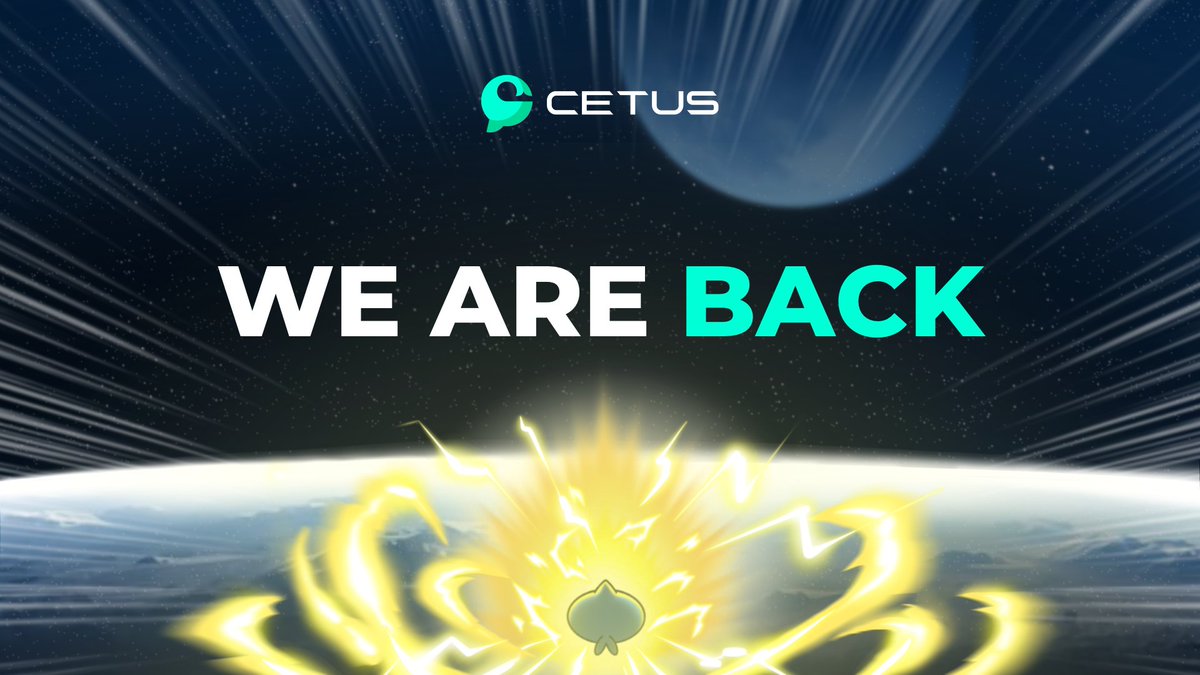100% payout
Restart the LP pool within 24 hours
Cetus is working hard to rebuild and regain confidence
Last night, as a community representative, I was invited to participate in the first Chinese AMA initiated by @TechFlowPost and with the participation of the @CetusProtocol team.
During the 100-minute in-depth exchange, the @henrybuild team responded to a number of key questions in a frank and systematic manner in the face of questions from many guests:
How did the incident happen?
How to fill the funding gap?
How to compensate for user assets?
How can security be strengthened?
Where is governance headed?·············
The whole audience AMA, one word throughout: "apologize".
From "I'm sorry" to "we were wrong", from "we take it" to "we won't run away", the team's attitude can be said to be sincere, honest and unevasive.
To put it simply, the attitude of this AMA can be summed up in one sentence: no evasion, no dumping, no messing with public commitment.
As a representative of the community, I must say that I am very pleased with this positive response and positive admission of mistakes. But for me, what I really care about is never how sincere my emotions are, but how to solve the problem...
There are only 2 issues that I care about:
👉 How to pay? What to pay? Can you afford it? After the loss, is there a future?
👉Whether Cetus is working for users and whether the Sui ecosystem can still stand is the answer I care more about.
So the first question I asked was: Is the morale of the team okay now? Has there been any internal shaking? After this incident, will you consider giving up, transforming, or continuing to carry on?
After all, in the currency circle, technical mistakes can be repaired, but confidence collapses and can no longer be supported.
Cetus gave a very positive answer: don't run away, don't lie down, continue to be optimistic about Sui, and optimistic that he can survive.
Through the guests' questions and Henry's responses, I gradually felt that Cetus has built a clear and executable framework for crisis management:
Face up to the problem→ clarify the path→ formulate the plan→ and refine the implementation.
One of the sentences that struck me the most was:
"We will compensate users with all the tokens, protocol income, and cash reserves held by the team. We will pay out all that we can and put the user first. ”
So I have specially sorted out the following core contents for your reference:
📍 A five-point summary of 🌱 the payout arrangement
1️⃣: Compensation ratio: 85%~95% of assets can be directly compensated
• The first phase of the payout covers the vast majority of users;
• Due to the fact that some funds have been transferred out of the cross-chain, it is currently impossible to achieve 100% one-time compensation;
• The part that cannot be repaid in a lump sum will be gradually made up by 100% through recovery, negotiated income, continuing operations, etc.;
2️⃣:Compensation object and calculation method:
• All users who participated in the LP before the incident;
• Unified compensation standards regardless of address, identity, region or participation channel;
• All payouts will be calculated based on the TVL snapshot ratio at the time of the incident (seems to be so, as I understand it).
3️⃣: Compensation method: multi-asset mixed distribution
• SUI/USDC/USDT + CETUS Mixed Payout;
• 100% of the team's self-owned share of CETUS, including the ununlocked portion in the future;
• Some of the indemnified assets may be subject to a lock-up or installment release mechanism (details are not disclosed);
• Priority will be given to the part of users with clear assets, the initial compensation will cover the majority of users, and the rest will be implemented gradually according to the rhythm;
• All claims will not be issued with new currency, and no inflationary assets will be introduced;
• The project team is expected to synchronize the progress of compensation with operational strategies, such as agreement restart;
4️⃣、 Source of Compensation Funds: 100% Tokens and Loans of the Team
• 100% of the $CETUS tokens held by the team (including the ununlocked portion in the future), all of which will be used for compensation;
• Operating cash reserves: the exact amount is not disclosed;
• Negotiated future revenue: Historical monthly average of approximately $1.5M (annualized $18M);
• Loan support from the Sui Foundation (not to mention, estimated at about $30 million), but to be repaid.
5️⃣. Impact of compensation:
• xCETUS users retain the underlying interest, but the interest will be extremely limited until the debt is settled;
• Due to the inclusion of CETUS in the payout, there is a certain risk of token selling pressure in the short term;
• The project team will mitigate the market impact through income adjustment and agreement repurchase;
• The governance mechanism will be restructured, and no new CETUS incentives will be added for the time being.
💬 My observations and judgments
To be honest, what Cetus is facing is not a question of "whether to pay or not, whether to afford it", but to know that the cost is huge, and it must grit its teeth and pay it. It's not an option, it's a line of life and death. If you don't carry this step, you are not qualified to talk about the future later.
The team has put everything they can at their disposal: 100% of their own tokens, all protocol revenue, cash reserves, and even a loan from the Sui Foundation. The team did not hesitate to smash all the resources at its disposal, which was not only a capital stop-loss, but also a "trust redemption".
Because they knew in their hearts that if Cetus collapsed, Sui's entire DeFi flywheel would come to a standstill, and Sui's DeFi would probably have to start all over again.
But it is precisely because of this attitude of "losing to the end and carrying to the end" that I began to re-examine: supporting a project is not because it is perfect, but because it dares to be responsible, and it chooses to bear it when it is the most difficult, without evading, throwing the blame, or messing up. It deserves to be believed again.
Of course, I'm not blindly optimistic.
CETUS will face selling pressure, xCETUS earnings will be greatly reduced and marginalized, TVL will definitely fluctuate in the short term, and the governance mechanism will have to be rebuilt.
But the point is, it's still there, it's alive, it's still trying to pay off its debts, it's trying to fix it. It's important, it's important.
And in fact, careful people can find that the current Cetus is no longer a simple DEX, but more like a "system-level infrastructure protocol" that is indispensable in Sui's ecosystem. Those who know me well know the importance of the term "infrastructure agreement".
In Sui's overall DeFi architecture, its position is really critical:
Before → accident, Cetus accounted for 80% of the trading volume of the Sui ecosystem.
→ is the default liquidity entrance for most protocols;
→ is the main battlefield of LP market making.
So when you say it's "too big to fail", you're not exaggerating at all. In other words, Cetus is down, Sui's DeFi is faulty, it's not an opinion, it's a structural fact.
In my opinion, it can be seen from a series of operations by the Sui Foundation that three signals have actually been released:
1. The core infrastructure cannot be collapsed, which is the ecological bottom line.
2. Cetus has defaulted to the "priority object of ecological support". Since it is in the end, the resources, traffic, and ecological cooperation projects in the future will be more biased towards Cetus.
3. Sui takes advantage of the situation to build a public chain image of "having the ability to make credit back", and once there is a problem, it is willing and capable of coming forward. Decentralization aside, this is a strong plus for institutions and developers.
I don't know if Cetus can go further, but I know that there are not many people who are willing to be responsible, willing to lose money, and willing to carry hard in Web3.
I really hope that everything can be repaired quickly and the funds can be recovered.

54.19K
58
The content on this page is provided by third parties. Unless otherwise stated, OKX is not the author of the cited article(s) and does not claim any copyright in the materials. The content is provided for informational purposes only and does not represent the views of OKX. It is not intended to be an endorsement of any kind and should not be considered investment advice or a solicitation to buy or sell digital assets. To the extent generative AI is utilized to provide summaries or other information, such AI generated content may be inaccurate or inconsistent. Please read the linked article for more details and information. OKX is not responsible for content hosted on third party sites. Digital asset holdings, including stablecoins and NFTs, involve a high degree of risk and can fluctuate greatly. You should carefully consider whether trading or holding digital assets is suitable for you in light of your financial condition.



